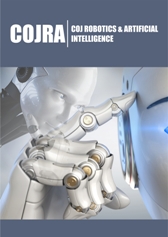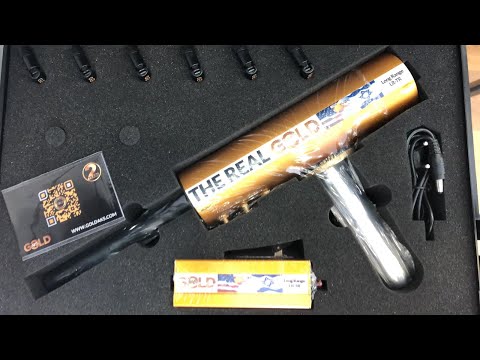List members , we all know how important GPR technology tools could be for our Hollow Earth research...here are some radical and exciting advances in this field (especially in the military grade GPR) :-
https://crimsonpublishers.com/cojra/fulltext/COJRA.000515.php
COJ Robotics & Artificial Intelligence
Ground Penetrating Radar Based Subsurface Object Detection: Mini Review
Nansha Li1, Haifeng Li2* and Renbiao Wu1
1Department of Advanced Signal Processing, China
2Department of Computer Science and Technology, China
*Corresponding author: Haifeng Li, Department of Computer Science and Technology, China
Submission: February 10, 2021;Published: February 25, 2021

Volume1 Issue3
February, 2020
Abstract
Go to
Ground Penetrating Radar (GPR) is the most commonly used nondestructive testing method for subsurface object detection because of its high efficiency, intuitive results, and convenient explanation. However, it is time-consuming and laborious to detect subsurface objects from GPR data and evaluate their location. Therefore, it is necessary to develop an efficient automated subsurface object detection method for subsurface safety intelligent inspection in various fields. This work aims to review the research and practices that focus on automatic GPR data interpreting, and the use of intelligent techniques in the field.
Keywords: GPR; Intelligence; Object detection
Introduction
Go to
GPR is a kind of measuring instrument which uses high-frequency pulse electromagnetic wave to detect the distribution of subsurface media. It has the advantages of accurate positioning, flexible use, high detection accuracy, and fast detection speed. As a new nondestructive testing technology, GPR has gained popularity in various fields to detect subsurface objects in recent years. At the military level, issues involved include the detection of mines and the burial of explosive hazards [1-3]. Advanced GPR systems are increasingly used for pavement or airport runway subsurface structure monitoring in the field of civil engineering [4-6]. GPR is used to measure concrete thickness, estimate water content changes, and mark or draw steel bar position [7,8] in bridge survey.
However, automatic identification of subsurface objects from GPR signals is not simple, since GPR cannot provide 3D positions but provide a reflected image with cluttered signals. GPR images are usually noisy due to noise, inhomogeneity of subsurface media, and interaction of echo waves in practical applications. Therefore, the interpret of GPR data mostly still relies on human experts. The manual reading process is subjective, error-prone, cost-prohibitive, and time-consuming. Thus, automatic object detection of GPR remains a challenging problem. Researchers in this field have done a lot of research and adopt many different strategies to solve this problem. In this review, based on the research and analysis of a large number of scholars at home and abroad, the principle of different determination methods for GPR detection of subsurface targets is introduced and summarized. we will focus on the three kinds of methods in recent years, including traditional signal processing methods and machine learning methods, and deep learning methods.
Signal Processing Based Methods
Go to
Song et al. [9] proposes the identification method of airport runway diseases using GPR with two steps. First, Hough transform is introduced to classify the two kinds of GPR B-scan images. In this method, the crack images are focused on one point after being transformed to parametric space. The hyperbolic equation with a time-delay factor is introduced in void images, to locate the position of the hyperbolic vertex accurately. Then a curve fitting method is used to identify the void type. Park et al. [10] proposes a novel instantaneous phase analysis technique designed to enhance the visibility of underground objects and provides objective criteria for GPR data interpretation so that objects can be automatically classified without expert intervention. Wu et al. [11] presents a novel method to estimate void thickness with modified calculation formula in lossy media. Electromagnetic (EM) wave transmission character is first analyzed in lossy media, and the seismic thin-layer theory is introduced to interpret the GPR response of the void layer. Then a calculation formula is deduced to express the relationship between dominant frequency amplitude and thickness. Finally, the original formula is modified by a calibrated coefficient, which is estimated through the least-square curve fitting method. Zhong et al. [12] proposes a time-frequency feature extraction method based on Wigner distribution. Since different targets have distinct energy distributions in the time-frequency domain, three time-frequency features are extracted, which are focused on the composition and the shape rather than the burial depth of the target. Borgioli et al. [13] solves the problem of hyperbolic overlap when the pipeline is close by introducing a weighting factor in the Hough transformation, where this weighting factor depends on the degree of difference in experimental error parameters. Windsor et al. [14] also proposes a method to segment target overlap by recording a set of associated position/time data pairs in the generalized Hough transformation method and then uses the traditional LS algorithm to interpret some parameters of the target.
Machine learning based methods
Zhou et al. [15] proposes the automatic feature extraction and classification algorithm of echo signal of GPR. The echo signal is decomposed and extracted by the average energy of binary wavelet transform and wavelet coefficient. then, the extracted feature vectors are fed back into the forward multi-layer perceptron classifier. Chantasen et al. [16] proposes a technique that can automatically detect and classify buried objects. Firstly, pretreatment is used to reduce clutter due to the influence of the dielectric layer interface. Secondly, the late time of the scattering signal is estimated by simple cross correlation. Thirdly, using the short time matrix beam method (STMPM), several continuous poles are extracted from the estimated late scattering response. Finally, support vector machine (SVM) is used to classify the extracted poles with different structures or shapes. Zhou et al. [17] uses objective information, such as the thickness of expressway subgrade disease and the amplitude change of layer interface reflection signal, and GPR clutter suppression, and layer interface detection and smoothing, and the region of interest extraction, feature extraction, and pattern recognition technology, to propose a novel automatic detection algorithm for expressway subgrade disease. Pasolli et al. [18] designs a genetic algorithm technique to identify linear and hyperbolic features of underground objects in binary images. Dou et al. [19] selects the positive/negative samples manually after clustering the GPR target hyperbolic and calculates the two normalized cross-correlation values of the hyperbolic, then sends them into their own 3-layer perceptual neural network for training classification to further screen the target, and then performs hyperbolic fitting to the final target. Maas et al. [20] uses the VJ algorithm [21] to extract the target region in GPR data.
Deep learning-based methods
Dinh et al. [8] applies the convolutional neural networks (CNNs) to eliminate false rebar peaks in the data from GPR surveys of concrete bridge decks. Lei et al. [22] integrates CNNs and long short-term memory networks to extract hyperbola region features to identify the diameter of the object in the B-scan images. Liu et al. [23] proposes a DNN architecture (i.e., GPRInvNet) to cope with the challenge of mapping GPR B-scan data to complex permittivity maps of subsurface structure. Tong et al. [24] applies CNNs to GPR images for automatically classifying subgrade defects (e.g., uneven settlement, sinkholes, and subgrade cracks). Two CNNs called multi-stage CNN and cascade CNN with different structures are established to accomplish the tasks automatically. Ji et al. [25] proposes a deep neural network-based inversion network to invert the relative permittivity of geo-structures from GPR B-scans. It employs a global feature encoder to extract the global information, as well as automatically learn the spatial alignments between the GPR data and the permittivity images. Pham et al. [26] adopts the Faster RCNN framework to detect the reflection hyperbolic in the GPR B-scan. Using gprMax toolbox [27] to simulate to generate more GPR simulation diagrams with different configurations to solve the problem of lack of real data sets. Firstly, The CNN is pretrained on the gray Cifar-10 database [28], and then, Pre-training CNN as a Faster RCNN classification framework, trained and finetuned on real and simulated GPR data.
Conclusion
Go to
From these existing researches, the signal processing based methods need to be preprocessed by a large number of calculations. The machine learning based methods such as SCM method is to map the input vector to a high dimensional feature space, and then to realize the optimal solution calculation of the classification plane in the high dimension space. This mapping must be pre-designed and generally highly nonlinear. This kind of nonlinear mapping is done by proper inner product function, and it also needs a lot of calculation. CNNs can automatically learn features in the training data set and be used for data detection after multiple iterative evaluations. Convolution neural network reduces the complexity of the model by sharing convolution kernel parameters, avoids overfitting during training, and improves the speed of image processing. Therefore, the use of convolutional neural networks to detect subsurface objects reduces complex preprocessing work. Future research should focus on developing a new deep learning detection framework for automatic detection and estimation of subsurface features in real scenes.
Regards

